Planning a trip to Olympic National Park can feel overwhelming. You’ve probably got a long list of things you want to do – rainforests, mountains, beaches – and not a lot of clarity on how to fit it all together. Maybe you’re worried about wasting time, missing the best parts, or showing up somewhere only to find it’s closed, crowded, or not what you expected.
I get it – I’ve been there. I’ve planned (and re-planned) my Olympic National Park vacation more than once, and I’ve learned the hard way what works and what doesn’t. Now I’m sharing the things I wish I’d known the first time – so you don’t have to make the same mistakes.
This is for you if you’re the kind of traveler who wants to get it right. You love nature, you want your trip to run smoothly, and you hate wasting precious vacation time on things that don’t live up to the hype.
I’ll walk you through the biggest trip-planning mistakes people make – and how to avoid them. Some are easy to miss, like underestimating drive times or not booking the right base camp. Others can seriously impact your experience, like skipping out on tide charts or choosing the wrong season.
Here’s a quick one: not realizing that Hurricane Ridge often closes due to weather – even in summer. That alone can completely throw off your plans if you don’t have a backup.
If you want to plan a trip to Olympic National Park that’s smooth, memorable, and uniquely yours, this will help. Let’s take a closer look at the 7 mistakes that could derail your trip – and how to avoid them.
Watch these 7 mistakes to avoid when planning a trip to Olympic National Park on video:
🔔 You can also watch this video on YouTube directly (opens in new tab).
🎙️ Or listen as a podcast:
🛏️TOP HOTEL PICK: Check availability now
🚘FIND THE CHEAPEST CAR RENTAL: Search Discover Cars for the best deals
✈️FIND THE CHEAPEST FLIGHTS: Search Skyscanner for the best deals
🧳GET TRAVEL INSURANCE: Get insured with Travelex before you go
📱TAKE AN AUDIO TOUR: Buy an audio tour now
Table of Contents
#7 Not allowing enough time
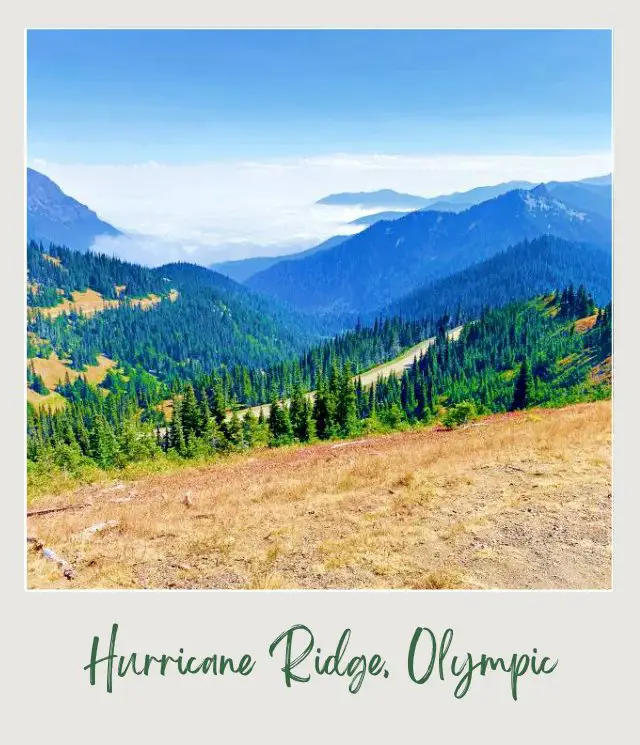
Olympic National Park is huge. It’s almost 1 million acres and encompasses four distinct ecosystems.
The Pacific coastline. Windswept beaches with enormous sun-bleached driftwood and jagged sea stacks rising dramatically out of the ocean off shore. Plus fascinating rock pools to explore at low tide.
Lowland forest. Lying in river valleys between the mountain peaks, there are rivers, lakes, and lush green forests.
Temperate rain forest. Moderate temperatures and lots of rain creates a perfect environment for enormous spruce and hemlock trees, twisted Bigleaf Maple Trees, enormous ferns, and about 200 varieties of moss.
Mountains with sub alpine meadows and higher alpine peaks. And, of course, endless views of mountain peaks on clear days.
The park is spread over several isolated areas on the Olympic Peninsula. The bulk of it is one huge area in the center of the peninsula with mountains and valleys. However, there are several areas of coastal forest and beaches scattered along the coastline, separated by areas of private property and Indian reservations.
Highway US-101 rings Olympic Peninsula, surrounding the mountainous center. To reach the mountains, the valleys, waterfalls, and lakes, you need to drive into distinct mountain areas or river valleys. To reach the beaches, you drive from Highway 101 in the opposite direction.
All this means one thing. You need time to see it all.
If you only have a day available, of course spending a day to see a couple of the highlights is better than not visiting Olympic National Park at all.
However, if you have time available, I really recommend at least four days to experience the different regions of the park with their incredible variety of environments and activities to enjoy.
Subscribe to daily national parks planning tips, travel inspiration and trip ideas and get instant access to the free PDF of
7 Mistakes to Avoid When Planning a Trip to Olympic National Park
#6 Trying to see it all in a day (or two)
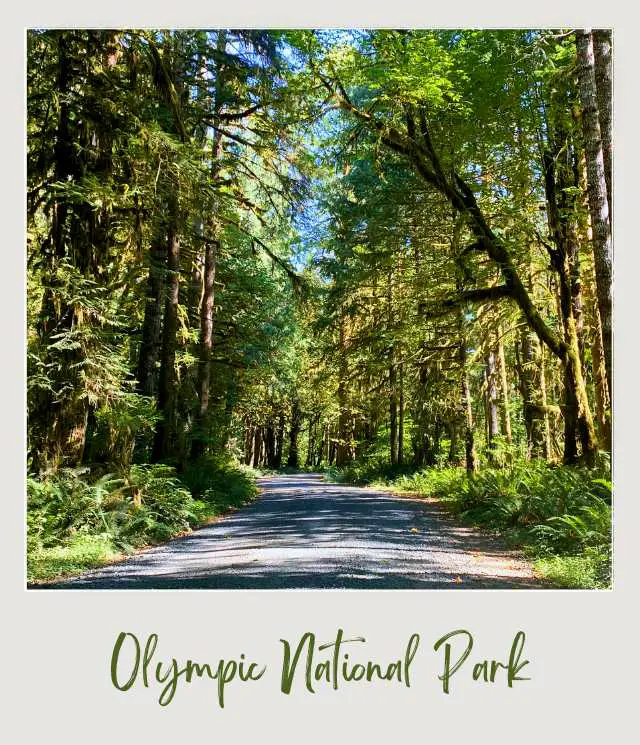
There is a lot to see and do, and it is all on the Olympic Peninsula, but a common mistake people make is to underestimate the distances between the different regions of the park.
It takes a couple of hours or more to drive from one area to another, so you don’t want to spend your whole day driving in your vehicle. With good traffic, it’s almost three hours from Hurricane Ridge to the Hoh Rain Forest and even more to Lake Quinault.
If you have less than four days, you are not going to be able to see it all.
So, if you have just one or two days, just focus one or two areas of the park only. It’s much better to do that than try to see every area in one day.
#5 Not checking the tide charts
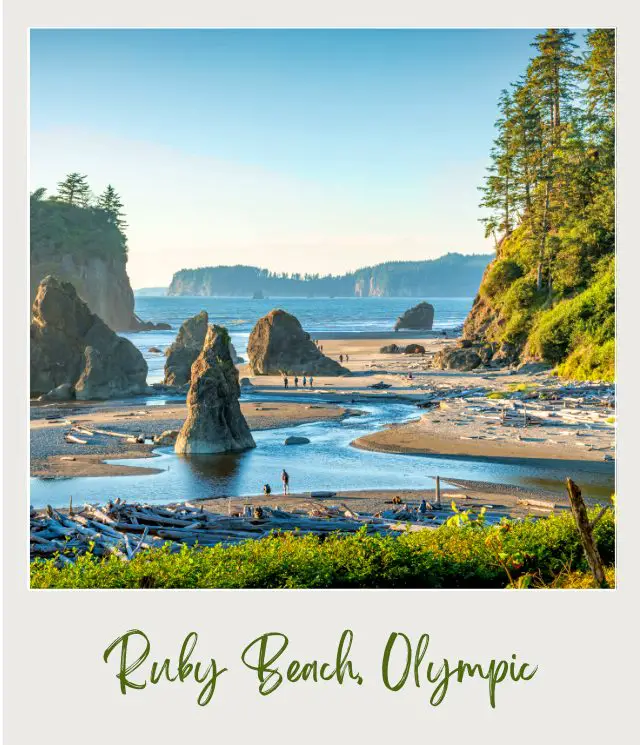
This is one of the biggest mistakes that I see people make – rocking up at a beach without checking the tide chart only to find that there is almost no beach there at all.
If you plan to visit any of the beaches, it’s really, really important to check the tides and be there at low tide. Best is 30 minutes before the low tide. Even better is to choose a negative tide. This is when the water level is actually lower than the standard measurement of 0 sea level.
Why are low tides important when visiting the Olympic National Park Beaches? For a couple of reasons.
First, almost the entire beach disappears under water at high tide.
The Pacific Northwest beaches are incredibly beautiful. But they are not wide stretches of soft white sand where you lie out and sun bathe and then take a refreshing dip in the cool ocean.
Instead, they are coves framed by rocky headlands, lined with enormous driftwood. There are rocky sections that trap sea water at low tides. Craggy sea stacks often rise out of the ocean nearby.
You can camp on the beaches, but you end up pitching your tent among the driftwood. And if you arrive at the beach at high tide, instead of enjoying a relaxing stroll along the beach, you’ll be scrambling over driftwood.
Second, the main thing to do at the Olympic beaches is to explore the tide pools. The tide pools are filled with green anemones, purple and orange seastars; barnacles and mollusks; tiny hermit crabs; spiky sea urchins, and more.
These tide pools are completely submerged at high tide. It is only at low tide that the pools are formed by water trapped in the rocks as the tide recedes.
So, it’s really important to check the tide charts and plan your trip around it.
Check the official tide chart here when you are planning your trip to Olympic National Park so you can visit at the right time.
#4 Getting started late in the day
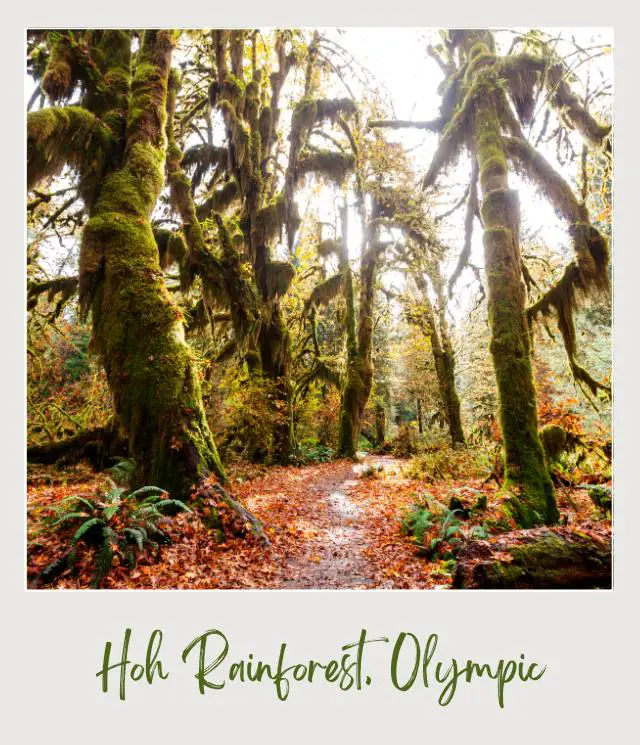
It rains a LOT in Olympic National Park. Which is not surprising since much of the park is a temperate rain forest. But sections like the beaches are also very rainy and wet.
The good news is that the park has a very distinct rainy season. Most of the rain falls between October and April. May to September are much drier and therefore much more pleasant to travel in.
This coincides with the main summer vacation period when school is out and many people are able to travel.
In 2022, approximately 2.43 million people visited the national park.
All this means that July and August are great times to visit Olympic National Park BUT the park also gets very busy in the short summer season.
Add to that the fact that there is only one road into most areas of the park and you have a perfect recipe for congestion and crowds.
Some areas like the Hoh Rain Forest are completely full as early as 8:00 am in summer. From then until around 6:00pm, it is one car out and one car in.
So, unless you get up early and get into the park before it fills up, you can spend a large part of your day sitting in your car or RV waiting to get into the park.
Instead of sleeping in and getting a late start to the day, it’s much better to get up super early, enjoy the park, then rest in the late afternoon.
#3 Staying in one place
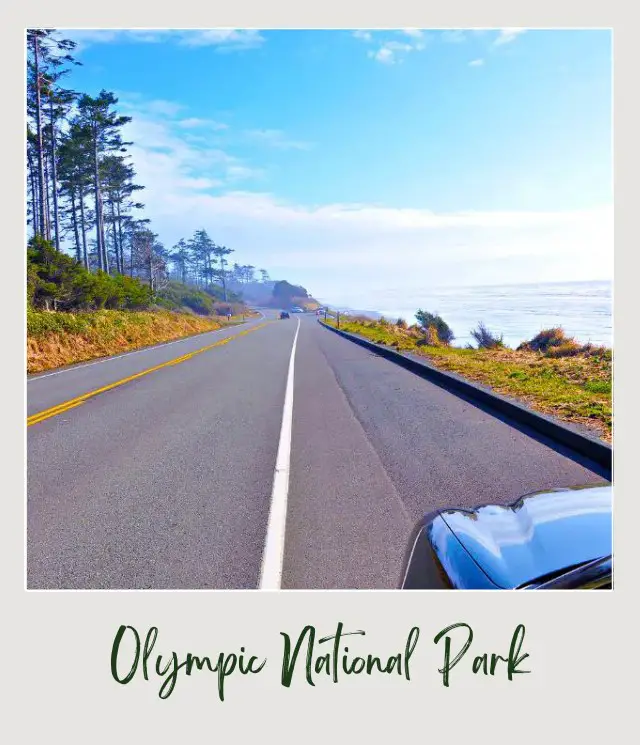
Usually, I like staying in one hotel, lodge or campground and using that as my base for my entire trip. This is what I see many people do when they visit Olympic National Park.
If you’re just visiting for a day or two and focus on the area around you, that’s fine.
However, if you’re staying for three or four days and want to explore more of the park, staying in once spot is actually a mistake. This is because of the long driving distances between the park’s highlights.
There are two main towns that have a large concentration of accommodations: Port Angeles and Forks.
If you staying Port Angeles, it’s about a two-hour drive to the Hoh Rain Forest. It’s doable, but if you’re trying to get there by 8:00am, it’s a very early start to your day.
If you stay in Forks, which is closer to the Hoh Rain Forest, it’s almost a two-hour drive to the top of Hurricane Ridge. Also doable, but not great.
A much better option is to move accommodations halfway through your stay.
So, a night or two in Port Angeles and a night or two in Forks (or campgrounds in those general areas). If you’re headed to or from Mount Rainier National Park, Lake Quinault is also a good place to break your journey and spend some time exploring that area.
Port Angeles is convenient for:
🔹Hurricane Ridge
🔹Lake Crescent
🔹Elwha Valley
🔹Sol Duc Valley
Forks is convenient for:
🔹The La Push and Kalaloch Beaches
🔹Hoh Rain Forest
#2 Not having a detailed (and flexible) plan
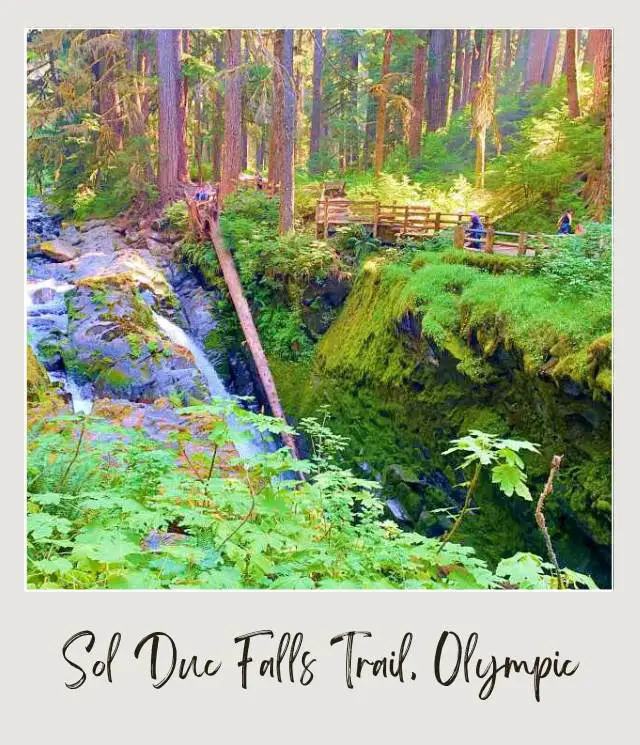
One of the biggest mistakes I see is people deciding to wing it when they travel to Olympic National Park. This may be possible at some of the smaller, less popular national parks, but is not a good idea when visiting Olympic National Park.
All the US national parks have gotten more and more popular in recent years, and with crowds come congestion.
Knowing when to get to each section early and which sections you can get to later in the day (and when) really makes a huge difference. Knowing how long it takes to get from one area to another and how long to spend in each area when you’re there also makes your planning so much easier.
Of course, things happen when you travel, so you need to be flexible, but because Olympic National Park is so large, with so many distinct sections, so many people and such large distances between the main sections, planning things out can really help you get the most out of your trip to Olympic National Park.
If you’re planning to visit Olympic National Park by yourself, make your planning easy and stress free with a detailed itinerary. I have 1-, 2-, 3- and 4-day itineraries for Olympic National Park that include all the park highlights, give you choices based on your preferred activity level, and take all the stress out of planning your trip.
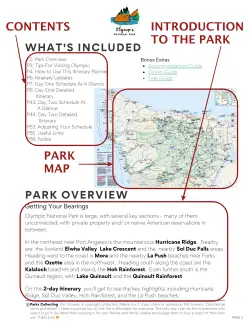
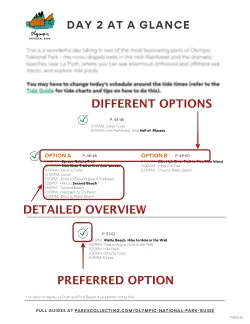
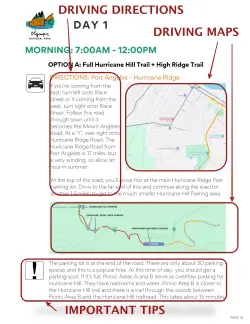

#1Not getting travel insurance
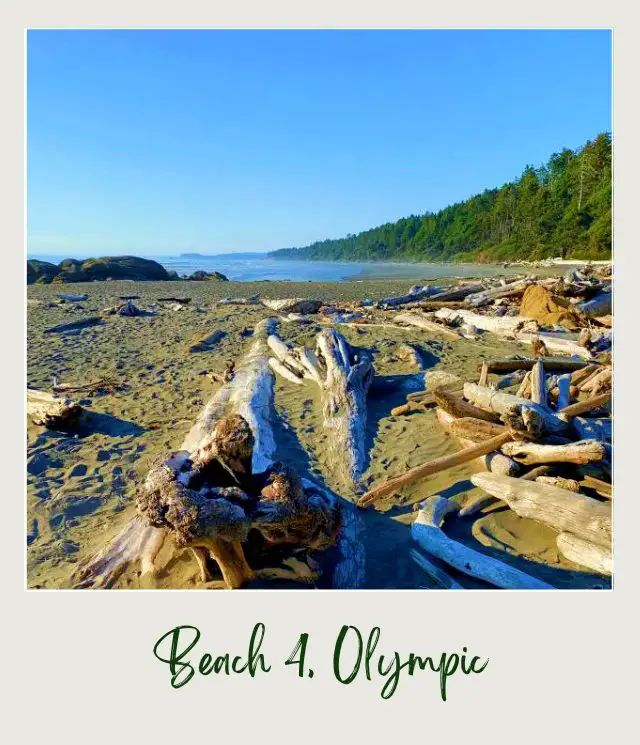
Travel insurance is something that no one ever wants to use, and people often don’t bother getting it, especially for domestic trips within the USA. However, I really think this is a huge mistake.
Many activities in national parks are inherently a little risky. Rocks are slippery when tide pooling; hiking trails are uneven and sometimes muddy; some roads aren’t paved …. It’s easy to slip or trip and need medical attention, or, if you’re remote enough, even emergency repatriation.
Plus, these days there are so many things that can happen in our lives that can cause a trip to be delayed or cancelled. When you’re on your trip, things like your camera can get lost or even stolen.
In all these situations, travel insurance can really be a big help. So, to avoid this mistake, I recommend getting good coverage for your trip.
Good travel insurance covers things like medical expenses, lost or stolen property, trip cancellation, and emergency repatriation.
Of course, not all insurance coverage is equal and you need to check the policy very carefully to see what is – and isn’t – covered. If you want to learn more about all this, check out my Guide to Buying Travel Insurance (on my other website) before getting your insurance.
➡️ A great insurance option is Travelex. You can compare Travel Insurance plans here or get a quote right now:
If you’re planning to visit Olympic National Park by yourself, make your planning easy and stress free with a detailed itinerary. I have 1-, 2-, 3- and 4-day itineraries for Olympic National Park that include all the park highlights, give you choices based on your preferred activity level, and take all the stress out of planning your trip.
More Planning Resources for Olympic National Park
⭐ Olympic National Park Guide
⭐ Olympic National Park Itinerary
⭐ 12 Tips for Visiting Olympic National Park
⭐ How Many Days in Olympic National Park?
⭐ Packing List for Olympic National Park
⭐ Best Things to Do in Olympic National Park
⭐ Best Views In Olympic National Park
⭐ Best Waterfalls in Olympic National Park
⭐ Best Hikes in Olympic National Park
⭐ Visiting Hurricane Ridge: Complete Guide
⭐ Best Hurricane Ridge Hikes
🔹 Hurricane Hill Trail Guide
🔹 Cirque Rim Trail Guide
🔹 High Ridge Trail to Sunrise Point Trail Guide
⭐ Best Hikes Near Lake Crescent
🔹 Marymere Falls Trail Guide
⭐ Best Sol Duc Hikes
🔹 Sol Duc Falls Trail Guide
🔹 Ancient Groves Nature Trail Guide
🔹 Sol Duc Salmon Cascades
⭐ Best Hoh Rainforest Hikes
🔹 Hall of Mosses Trail Guide
🔹 The Hoh River Trail Guide
⭐ Best Olympic National Park Beaches
⭐ Best Tide Pools in Olympic National Park
🔹 Rialto Beach Guide
🔹 Kalaloch Beach 4 Guide
🔹 Third Beach Guide
🔹 Second Beach Guide
🔹 The Tree Of Life
⭐ Best Lake Quinault Hikes
🔹 Maple Glade & Kestner Homestead Trails
⭐ Lake Quinault Loop Drive: A Complete Guide
⭐ How To Get to Olympic National Park
⭐ All The Airports Near Olympic National Park
⭐ The Closest Airport to Olympic National Park
⭐ When is The Best Time To Visit Olympic National Park?
⭐ What To Expect Throughout the Year
⭐ 10 Fun Facts About Olympic National Park
Enjoy your trip to Olympic National Park? Do you have any other tips for visiting Olympic National Park (things to avoid)? I’d love to hear about them. Join my private Facebook group National Parks Collectors and comment and let me know (you can also pick up extra planning tips, share your photos and stories with other national park lovers and more).
Subscribe to daily national parks planning tips, travel inspiration and trip ideas and get instant access to the free PDF of
7 Mistakes to Avoid When Planning a Trip to Olympic National Park
If you liked this Olympic National Park trip planner, Pin It to your Olympic National Park board!

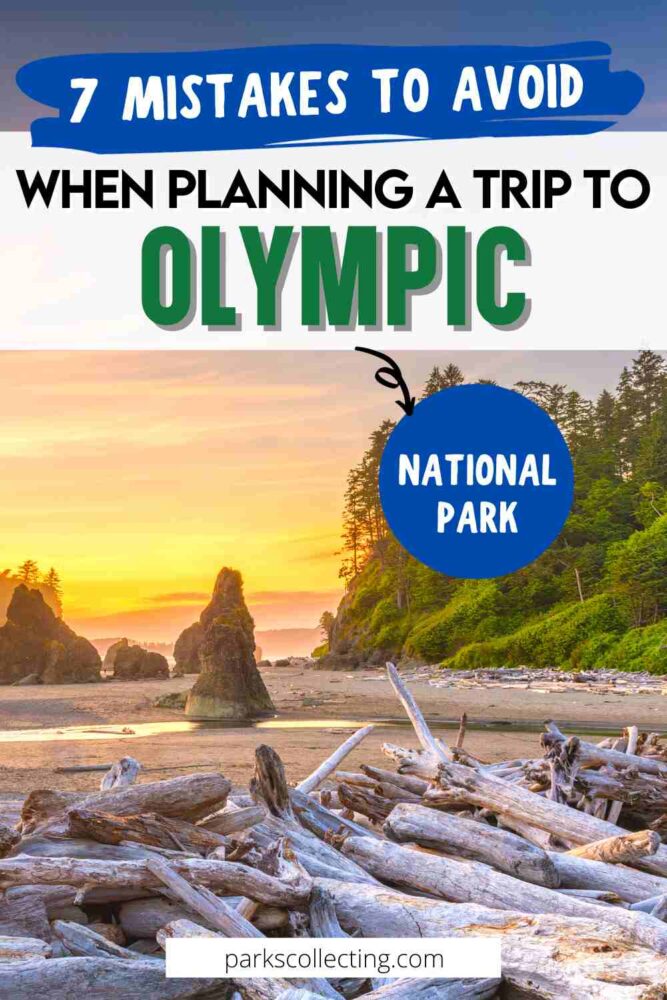
💡 Are you just starting to think about taking a national parks trip? Get Inspiration
‼️ Are you looking for helpful tips for visiting US national parks? Read articles that share useful tips on a range of national-park related issues
💻 Are you starting to plan a trip to Olympic National Park? Read my Guide to Olympic National Park
📋 Do you want a ready-made super detailed plan for your trip to Olympic? Get a detailed 1 – 4-day Olympic National Park Itinerary
💲 Are you ready to book your trip? Use these Planning and Booking Resources
📖 Do you want to read a book about US national parks? Check out my Recommended Reading Lists
About the Author
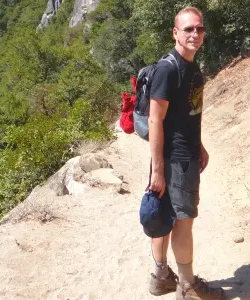
James Ian is a national park, camping and hiking expert.
He has dedicated his life to travel, visiting more than 80 countries, all 7 continents and most of the national parks in the United States. With over 35 years experience in the travel industry, James has worked on cruise ships, at resorts and hotels, and as a travel planner who’s helped hundreds of people plan successful trips to US national parks.
Based on his experience visiting our national parks multiple times, in-depth research and expertise as a travel planner, James has published detailed itineraries for many of the major national parks in the US. These itineraries, as well as in-depth park guides, and other resources will help you have your own incredible trip to US national parks without stress and hassle.
As a national park expert, James has contributed to many publications, including USA Today, Newsweek, Time Business News, Savoteur, Best Trip, and Wired.
I’m a member of the Amazon Services LLC Associates Program. As an Amazon Associate I earn from qualifying purchases.
